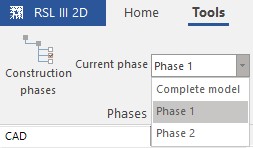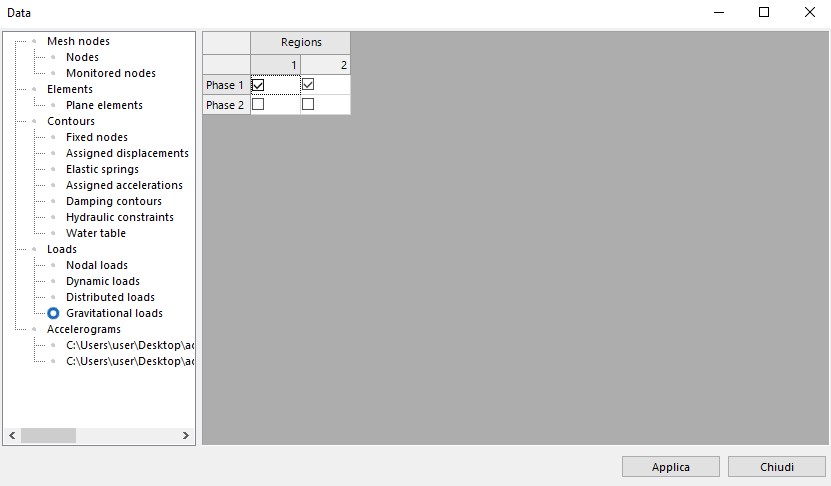To perform a local seismic response analysis using RSL III 2D, two phases must be defined. In the first phase (Phase 1), the calculation of the initial tensional state of the defined model is performed. The second phase (Phase 2) consists of the actual analysis of the local seismic response of the considered model in which, following the assigned accelerograms, the response spectrum is calculated.
After generating the calculation mesh, the software automatically generates a calculation phase (Phase 1), which can be viewed from the Tools panel.

In order to define the second calculation phase, you must click on ‘Construction Phases’ and then, in the window that opens, click on the + symbol to add the second phase. When conducting a local seismic response analysis, it must be ensured that all regions active in phase 1 are also active in phase 2.

After clicking OK, the second step will be added to the drop-down menu of the toolbox:

By selecting the relevant phase, it will then be possible to define the boundary conditions of the selected phase.
Before proceeding further, it must be taken into account that in order to generate the tension state, the software applies gravity to the defined materials. It is necessary to specify that gravity should only be applied in the first phase, the one in which the tension state is generated, while it should not be considered in subsequent phases, since the tension state generated in the previous phase is imported. To do this, click on the ‘Data’ button in the Home panel, and under ‘Loads’ --> ‘Gravity Loads’ tick only the regions active only in Phase 1, as shown in the following screenshot.

©GeoStru